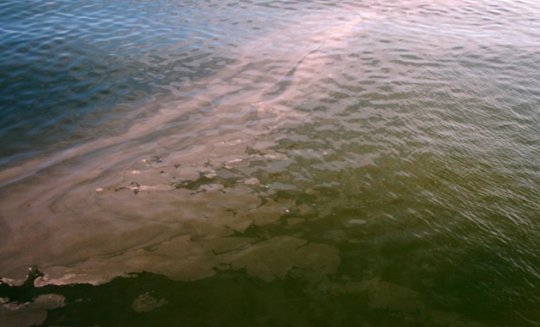[ad_1]
The algae responsible for Florida’s toxic red tides may be more resilient to shifting ocean chemistry than scientists previously realized, according to research from Florida State University oceanographers.
A new study has revealed that the red tide-causing species that has menaced Florida’s coastal environments and tourism-based economies is able to efficiently utilize carbon dioxide (CO2) at a range of disparate concentrations.
The algae, called Karenia brevis, is able to thrive equally well in low-CO2 environments — like during red tide blooms, when carbon in the ocean can become scarce — and in high-CO2 environments — concentrations we would expect in a future ocean when atmospheric and oceanic CO2 is expected to approximately double.
“There has been a large increase in CO2 concentration from pre-industrial times already, and we expect more changes in the future,” said study co-author Sven Kranz, an assistant professor in the Department of Earth, Ocean and Atmospheric Science. “Past studies suggested we might see changing responses in these single-celled organisms, so we contacted the Florida Fish and Wildlife Commission, which monitors K. brevis occurrences in Florida, to provide us with a local species, and we started to investigate.”
The study, which was published in the journal Progress in Oceanography, was among the first to evaluate responses to shifting CO2 concentrations in a K. brevis strain endemic to Florida.
“Despite the fact that we’ve seen increasing red tide blooms in Florida, there haven’t been many ecophysiological studies on Florida-specific strains,” said co-author and FSU graduate student Tristyn Lee Bercel. “Through our work we found that K. brevis is able to efficiently use available inorganic carbon for growth. Even in bloom situations where it seems like CO2 could become limiting, the species is able to adjust and keep growing.”
In an effort to better understand K. brevis‘ response to changing ocean chemistry, researchers drilled down into the underlying mechanisms responsible for the species’ inorganic carbon uptake and processing. They found that K. brevis is capable of efficiently using two different sources of inorganic carbon — CO2 and bicarbonate.
The study showed that when CO2 is high, K. brevis cells relied more heavily on the uptake of CO2 rather than bicarbonate, which requires higher energetic investment to take up. Conversely, when CO2 was low, the cells were able to shift their internal resources toward the uptake of bicarbonate while maintaining their growth and metabolic functions.
“Under different CO2 concentrations, the cells actually change the way they take up inorganic carbon,” Kranz said. “This species is able to shift its uptake strategies for available carbon, regardless of whether it’s CO2 or bicarbonate.”
That adaptive propensity for resource management could make K. brevis more dangerous as Earth’s oceans continue to be suffused with CO2.
In their experiments, researchers found that as CO2 increases, K. brevis seemed to reroute some energy that would otherwise be used for carbon uptake toward the production of brevetoxin, a dangerous neurotoxin that can accumulate to poisonous levels in oysters and other popular seafood.
The trend detected by researchers was not statistically significant, so it’s unknown whether and how K. brevis‘ brevetoxin production would actually change with increasing concentrations of CO2. However, researchers said this preliminary finding, and the broader findings of the study, illustrate the ways K. brevis might respond as ocean chemistry continues to shift.
“If there’s more carbon around, it could potentially alter cellular biochemical pathways in K. brevis,” Bercel said. “We only looked at the lower end of the projected CO2 and we saw a slight — although not statistically significant — increase in brevetoxin with enhanced CO2.”
Researchers speculate that higher CO2 could intensify the effects of K. brevis on coastal ecosystems, but they said more research on the species and its ecosystem are needed to confidently determine the nature and extent of those effects.
[ad_2]















